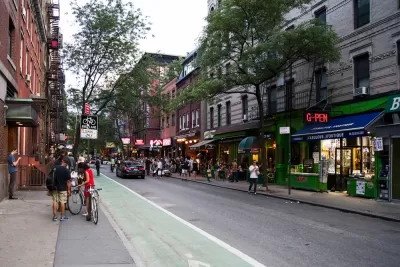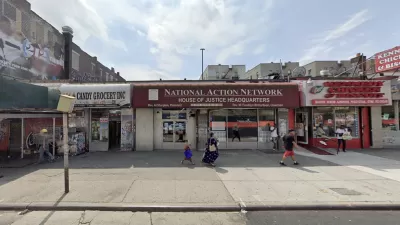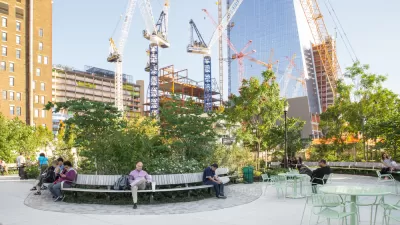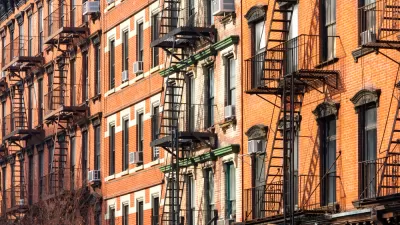A former resident of the iconic neighborhood reflects on its past, present, and future.

In a feature piece, Susannah Jacob recounts her experience living in New York’s West Village and describes the social, economic, and cultural changes in the neighborhood in recent years. She also looks back and traces notable shifts in the neighborhood, including its transformation from a working-class, immigrant enclave to a white bohemian one in the 1960s.
Gentrification began to transform the West Village long before other New York neighborhoods, but the more recent influx of extreme wealth has changed the area drastically. Jacob looks at the numbers—widening income disparities, an increase in single-family homes as apartment buildings disappear, and a surge in businesses catering to the area’s high-income residents:
There are fewer manufacturing, wholesale trade, healthcare, social assistance, and arts and entertainment businesses. Most of the old factory buildings that housed defunct businesses have either been converted into condominiums and mansions or turned into high-rise modern buildings bearing the names of their former enterprises, such as the Superior Ink building, now a luxury condo development overlooking the Hudson River, the Babaco Alarm building, now a mansion, and, most grotesquely, the former Village Nursing Home, which previously had 200 beds for the neighborhood’s elderly and is now the site of a handful of full-floor apartments (between 2006 and 2016, lower Manhattan lost more than half of its certified long-term care facility beds, DNAinfo has reported).
She also talks to longtime residents and employees of surviving businesses about how the character and feel of the West Village have changed over time. People who grew up in the neighborhood recall that crime and drugs were issues in the 1970s and 1980s, but housing was affordable and the mix of residents created a vibrancy and sense of community that the West Village lacks today.
"With its churn of stores appearing then disappearing and the rich who come and go like a traveling circus, the neighborhood had come to seem to me a symbol of impermanence driven by wealth. At first glance, its increasing emptiness—vacant commercial spaces blighted by skyrocketing rents, shells of brownstones, and luxury apartments unoccupied for fifty weeks a year—suggested a place on the precipice of becoming something else. In time, I understood that the neighborhood’s emptiness is simply its deepening condition," notes Jacob.
FULL STORY: What Happened to the West Village?

Alabama: Trump Terminates Settlements for Black Communities Harmed By Raw Sewage
Trump deemed the landmark civil rights agreement “illegal DEI and environmental justice policy.”

Study: Maui’s Plan to Convert Vacation Rentals to Long-Term Housing Could Cause Nearly $1 Billion Economic Loss
The plan would reduce visitor accommodation by 25% resulting in 1,900 jobs lost.

Planetizen Federal Action Tracker
A weekly monitor of how Trump’s orders and actions are impacting planners and planning in America.

Wind Energy on the Rise Despite Federal Policy Reversal
The Trump administration is revoking federal support for renewable energy, but demand for new projects continues unabated.

Passengers Flock to Caltrain After Electrification
The new electric trains are running faster and more reliably, leading to strong ridership growth on the Bay Area rail system.

Texas Churches Rally Behind ‘Yes in God’s Back Yard’ Legislation
Religious leaders want the state to reduce zoning regulations to streamline leasing church-owned land to housing developers.
Urban Design for Planners 1: Software Tools
This six-course series explores essential urban design concepts using open source software and equips planners with the tools they need to participate fully in the urban design process.
Planning for Universal Design
Learn the tools for implementing Universal Design in planning regulations.
Caltrans
Smith Gee Studio
Institute for Housing and Urban Development Studies (IHS)
City of Grandview
Harvard GSD Executive Education
Toledo-Lucas County Plan Commissions
Salt Lake City
NYU Wagner Graduate School of Public Service





























